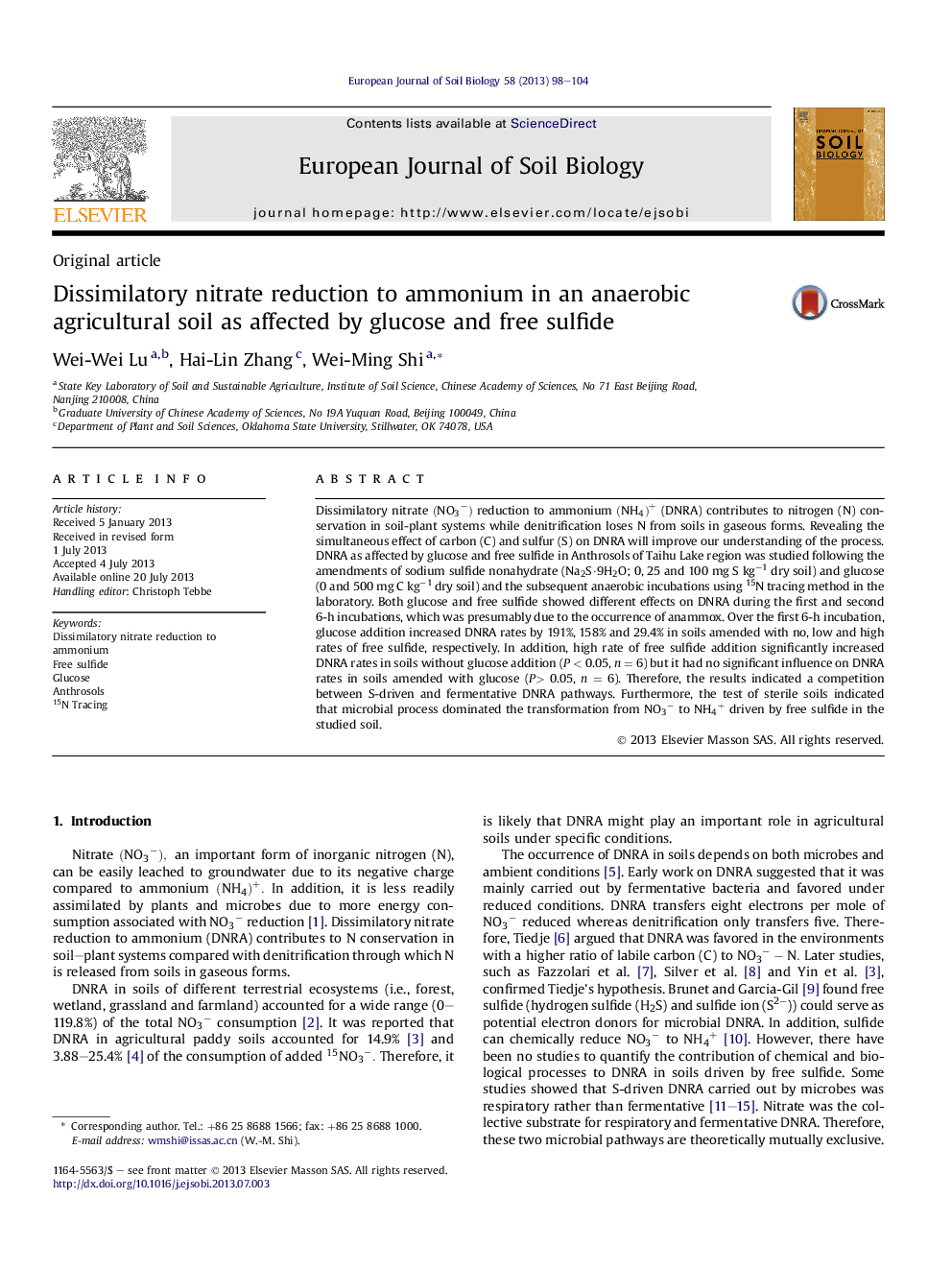| Article ID | Journal | Published Year | Pages | File Type |
|---|---|---|---|---|
| 4391933 | European Journal of Soil Biology | 2013 | 7 Pages |
•The first evidence of competition between fermentative and S-driven DNRA pathways.•The first evidence of free sulfide promotion on DNRA in terrestrial ecosystem.•Microbiological process dominates the transformation from NO3−NO3− to NH4+NH4+ driven by free sulfide.•The first indirect evidence of anammox occurrence in agricultural soil.
Dissimilatory nitrate (NO3−)(NO3−) reduction to ammonium (NH4)+(NH4)+ (DNRA) contributes to nitrogen (N) conservation in soil-plant systems while denitrification loses N from soils in gaseous forms. Revealing the simultaneous effect of carbon (C) and sulfur (S) on DNRA will improve our understanding of the process. DNRA as affected by glucose and free sulfide in Anthrosols of Taihu Lake region was studied following the amendments of sodium sulfide nonahydrate (Na2S·9H2O; 0, 25 and 100 mg S kg−1 dry soil) and glucose (0 and 500 mg C kg−1 dry soil) and the subsequent anaerobic incubations using 15N tracing method in the laboratory. Both glucose and free sulfide showed different effects on DNRA during the first and second 6-h incubations, which was presumably due to the occurrence of anammox. Over the first 6-h incubation, glucose addition increased DNRA rates by 191%, 158% and 29.4% in soils amended with no, low and high rates of free sulfide, respectively. In addition, high rate of free sulfide addition significantly increased DNRA rates in soils without glucose addition (P < 0.05, n = 6) but it had no significant influence on DNRA rates in soils amended with glucose (P> 0.05, n = 6). Therefore, the results indicated a competition between S-driven and fermentative DNRA pathways. Furthermore, the test of sterile soils indicated that microbial process dominated the transformation from NO3−NO3− to NH4+NH4+ driven by free sulfide in the studied soil.
